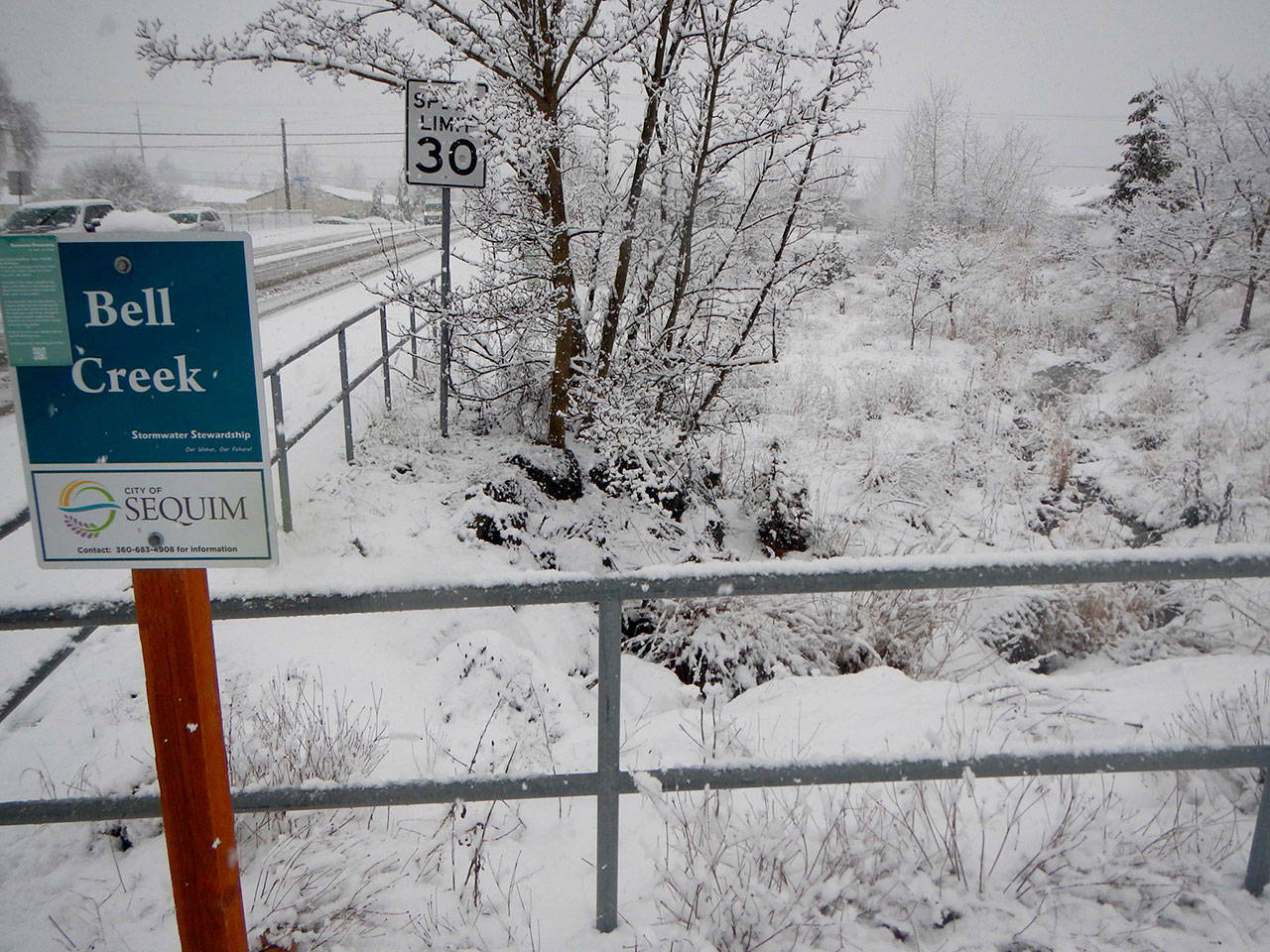An incoming state grant should help around the City of Sequim in some key areas when heavy rains fall.
Branded the “Stormwater Improvements to Benefit Bell Creek and the Shallow Aquifer” project, city staff plan to use a $339,117 Department of Ecology grant with a 15 percent, $50,868 match by the city in four projects following the city’s 2016 Stormwater Master Plan.
The four projects include plans to:
• Install filters for stormwater discharge into Bell Creek at North Brown Road and East Washington Street (in front of Les Schwab);
• Increase stormwater infiltration at the southwest corner of Seventh Avenue and West Washington Street (in front of McDonald’s);
• Assess groundwater susceptibility to contamination at the city’s stormwater infiltration facilities, and prioritize future projects, and,
• Implement an outreach and inspection program for owners of private stormwater facilities to assist compliance with Sequim Municipal Code maintenance requirements.
Sequim City Councilors unanimously approved the projects Feb. 25.
Ann Soule, Sequim’s water resource manager, said she applied for the grant three years ago, and that it’s rare in Western Washington to handle stormwater through infiltration like in Sequim due to its ancient flood plains.
“Both of these (construction) projects are going to protect our water resources better than they are now and add some treatment components to the facilities,” Soule said.
Bell Creek
As Sequim continues to develop, Soule said stormwater has either been distributed underground through storm drains or infiltration pipes. However, the intersection of Brown Road and East Washington Street is the only place she knows of built differently, where catch basins put water directly into Bell Creek.
In the city’s report to the Department of Ecology, it states the creek drains to Washington Harbor in Sequim Bay and enters the Strait of Juan de Fuca, and that it serves salmon and wildlife habitat.
With the grant funding, city staff can install filters for stormwater such as sediment, oil, heavy metals and other substances that collect in pavement near traffic, City Engineer Matt Klontz said.
For construction on this and the Seventh Avenue project, city staff will perform all functions of the project, he said.
Seventh Avenue
Prone to flooding, the southwest corner of Seventh Avenue and West Washington Street is targeted for more space to catch water underground.
Klontz said it’ll be “challenging because there are a lot of city utilities in this part of the roadway” and “tricky to shoehorn in a new infiltration system but it’ll have more capacity to take on and prevent a potential flooding event.”
Soule said some of the water at the southwest corner causes flooding on the southeast corner, too.
City assessment
The third part of the grant allows for staff time to investigate the city’s facilities/roads and see what may be the next most vulnerable areas in the city. From there, staff will create a prioritization plan for infiltration facilities, Soule wrote in the grant request.
She said one part of the project includes mapping soils and different types of vehicle traffic to to see if provisions need to be in place at certain intersections to stop pollutants from infiltrating the ground with stormwater.
Partnerships
The final portion includes creating an inspection program for privately-owned stormwater facilities, such as parking lots.
“We have a lot of resources available. We just haven’t had the staff capacity to reach out to landowners to tell them,” Soule said.
“Hopefully folks are taking care of their systems. If not, we can provide some resources for them.”
Soule wrote that the new program will inspect at least 15 facilities annually and provide technical support for private stormwater facility owners.
“(Stormwater is) not something we can let them take care of and not worry about,” Soule said. “We should be overseeing it to some degree and helping them at least know what they should do.”
Funding
The city’s portion of the 15 percent, $50,868 match will come from its stormwater capital budget funded in half by water and sewer utilities. The grant came from the Department of Ecology’s Stormwater Facilities Assistance Program.
Funding is available for three years, and Klontz said they’ll bring back construction plans in the coming months for the construction projects for the city council’s approval.
Councilor Ted Miller said, “If we only have to contribute 15 percent, then it’s a bargain.”
Councilor Bob Lake echoed the sentiment, saying, “(It) seems like a great return on equity to me.”
For more information about the city’s stormwater and surface water management, visit www.sequimwa.gov or call 360-683-4908.



